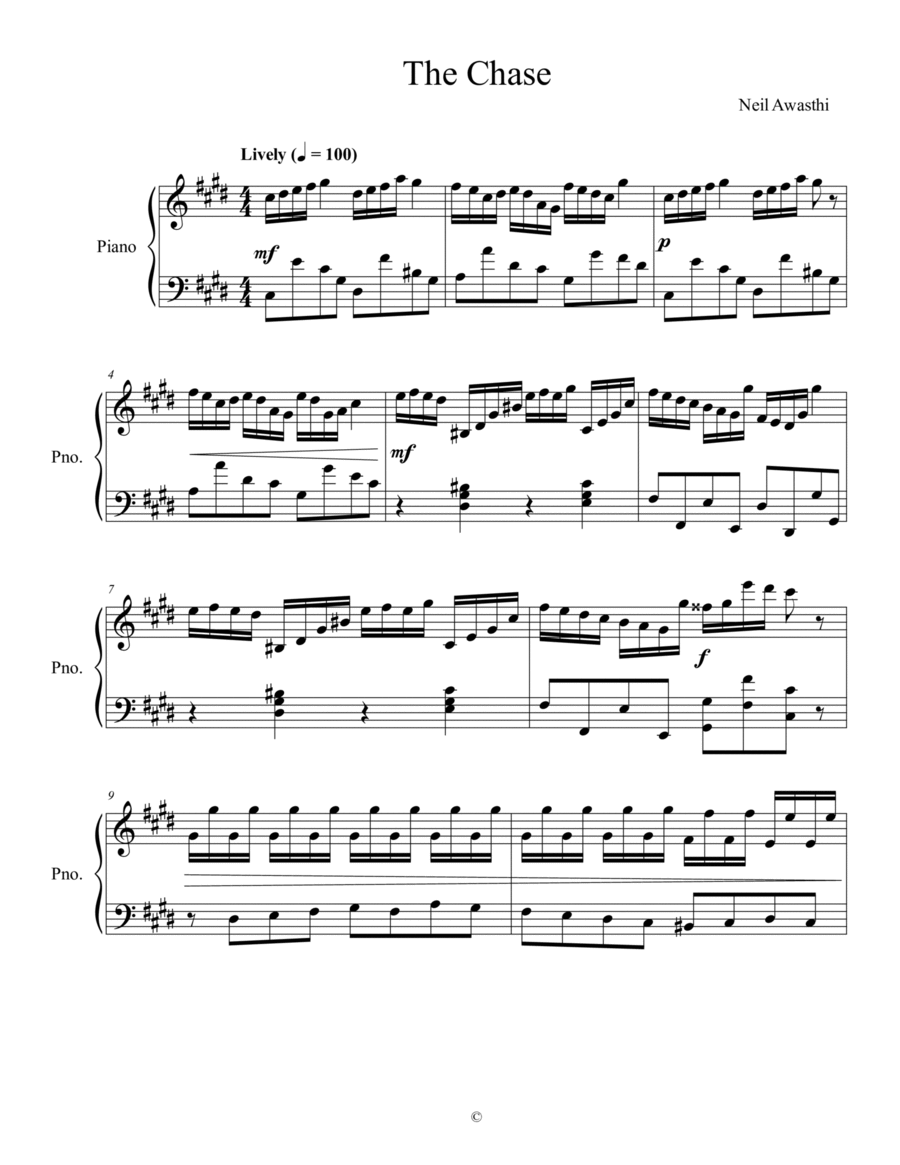Piano Solo - Level 4 - Digital Download SKU: A0.1033340 Composed by Neil Awasthi. Contemporary. Score. 6 pages. Neil Awasthi #6352703. Published by Neil Awasthi (A0.1033340). The chase is afoot! A rather large cat attempts to hunt a wily mouse. The mouse tries to escape the catās clutches. Who succeeds?This pieceās ternary form follows the chase between a cat and mouse. Section A is lively and fast-paced because the cat is on the hunt for the mouse. Since this piece is written from the mouseās perspective, C-sharp minor conveys the mouseās fright and fear. The time signature is 4/4 to allow for 16th notes, which denote running steps. The theme in m.19 repeats several times throughout Section A to signify the large catās ominous stalking. Tenutos and staccatos punctuate the catās heavy steps. In m.14-15, the chromatic scale represents the catās momentum. The constantly changing dynamics showcase the various movements and emotions in a chase. Specifically, in m.28-31, the dynamic changes to piano and pedal is employed to signify the mouseās despair. Section B stands alone, representing the mouseās successful escape from the cat. The sectionās key signature D-flat major is light and happy. A time signature of 6/8 swings, furthering the carefree mood of the mouse. The beginning of Section B repeats to emphasize the mouseās joyous escape. However, at the end of the section, the cat returns. In m.61-68, varying speeds and descriptors contrast the movements of the cat and mouse. In m.68, the catās theme is an octave lower to draw attention to the catās threatening, heavy steps. In m.70-71, the notes accelerate to show that the mouse begins to run again. Section Aās refrain recaps the cat chasing the mouse. In m.89-100, the end, tells the mouseās fate. The climatic ending is highlighted by the speeding tempo. The treble-clef notes are an octave higher to build excitement. In m.95-96, notes descend 4 octaves to indicate the mouseās ultimate demise. The piece ends with grand chords to mark the mouseās death.
